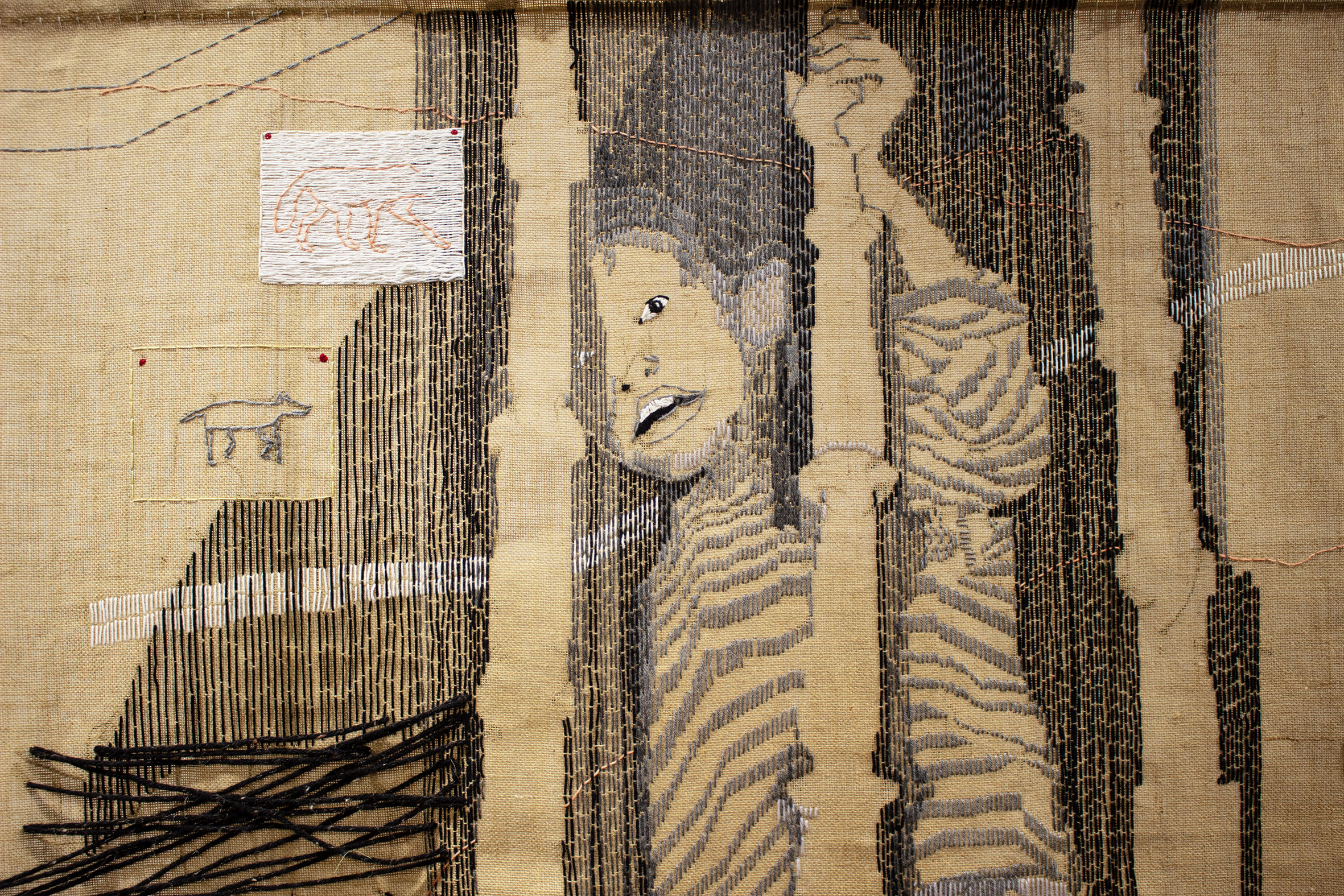Unwilling Collaborator
2025 - ongoing
2025 - ongoing
Unwilling Collaborator is a collaboration with my one-year-old daughter exploring how the families we create are haunted by the families we come from. At a time of increased photo sharing on social media and powerful online facial recognition technology, my project also reflects on the overlapping imagery represented by faces, masks and screens.
Like many new parents, I am interested in – and fearful about – how my own childhood experience will shape my relationship with my daughter. This photo series, both as process and in the resulting images, is intended to provoke thinking about boundaries, storytelling, honesty and control. As well as exploring a mother/daughter relationship, the photographs stage the issue of how a parent chooses to frame and document their child.
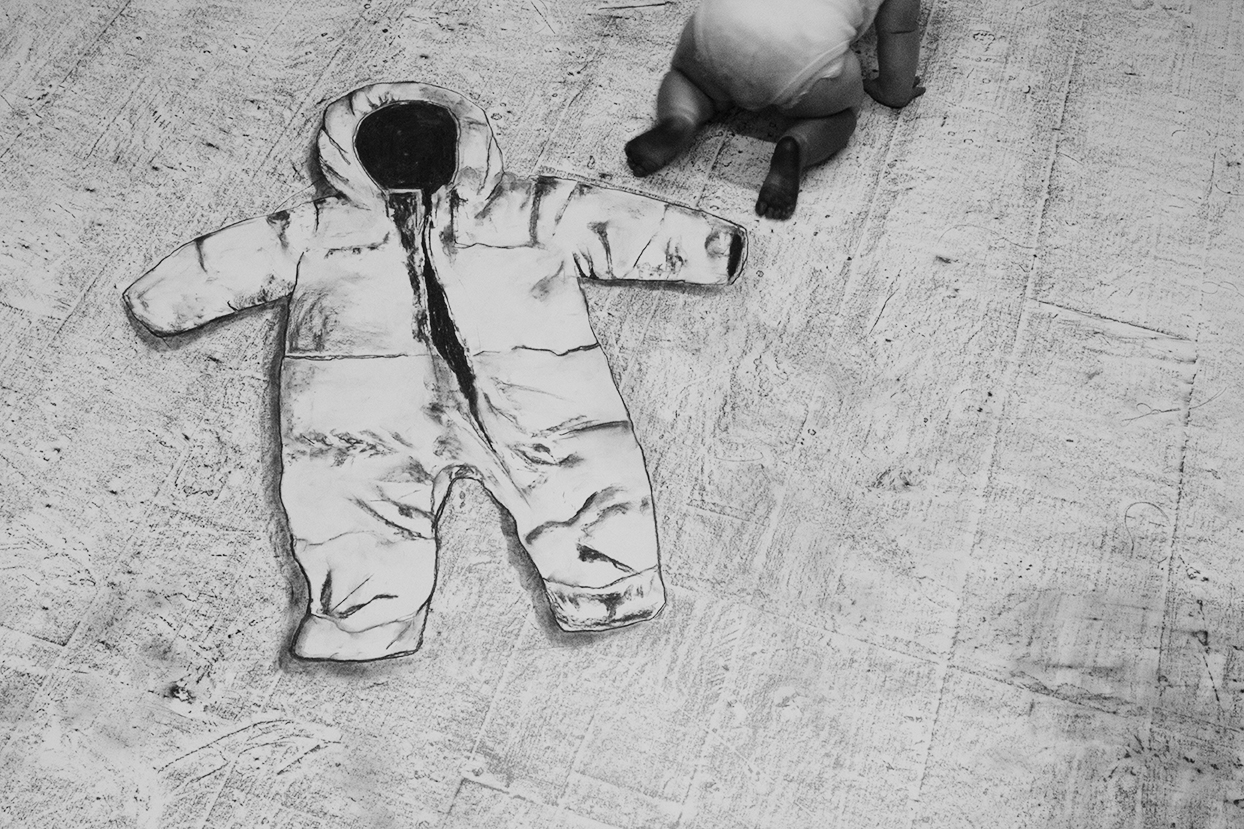
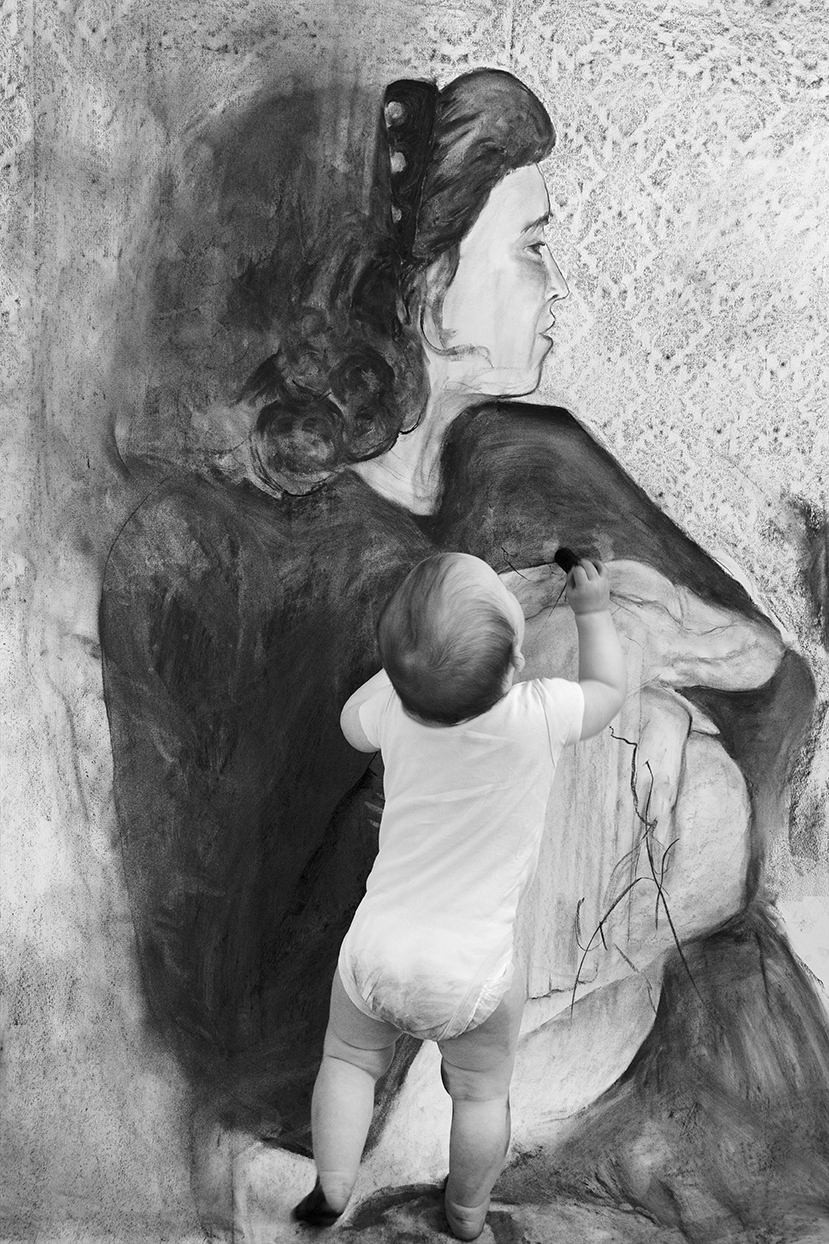

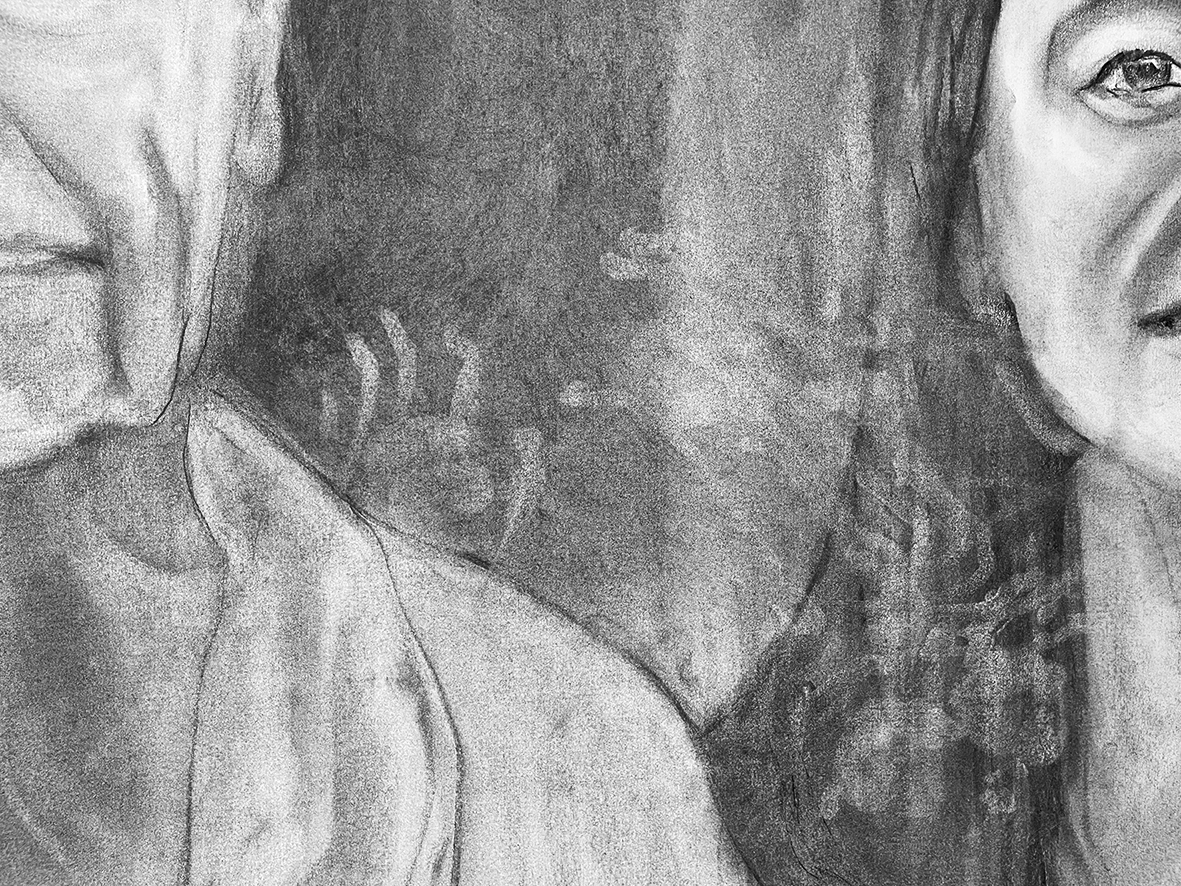
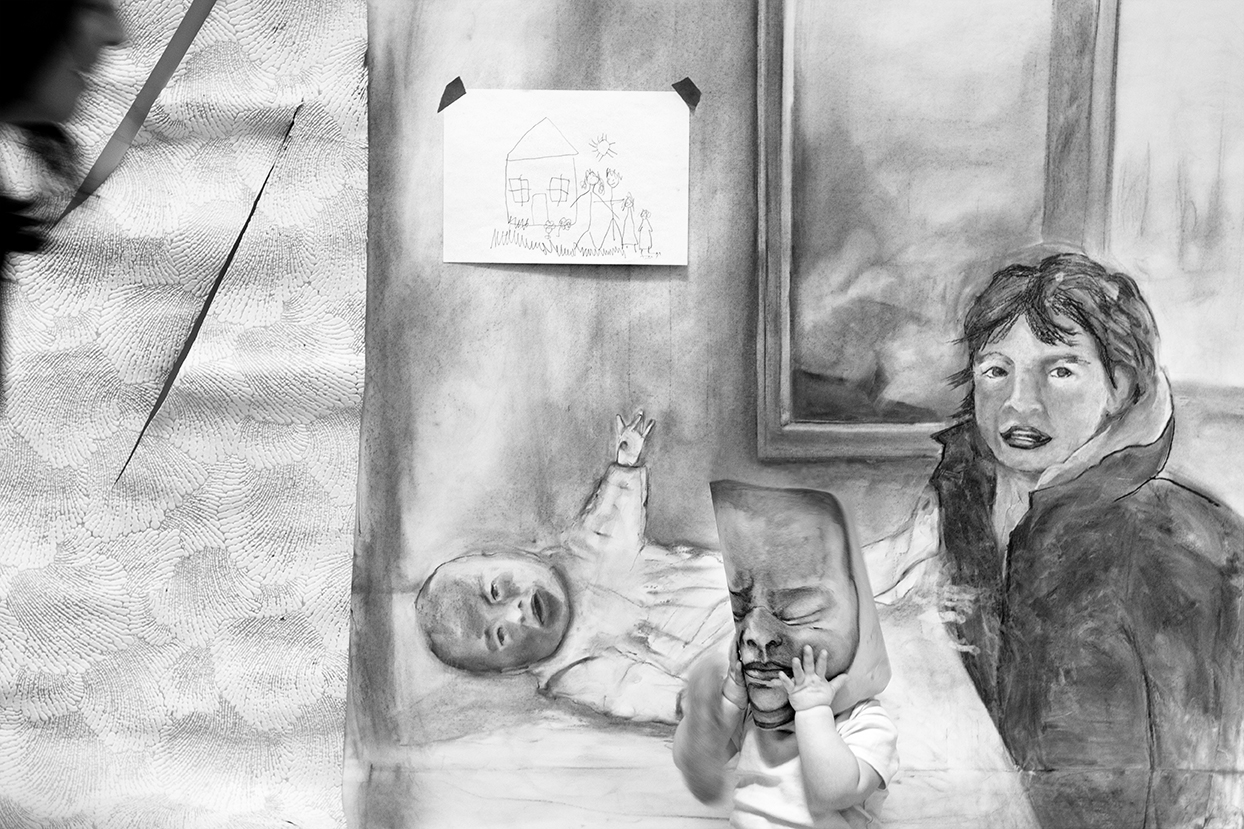
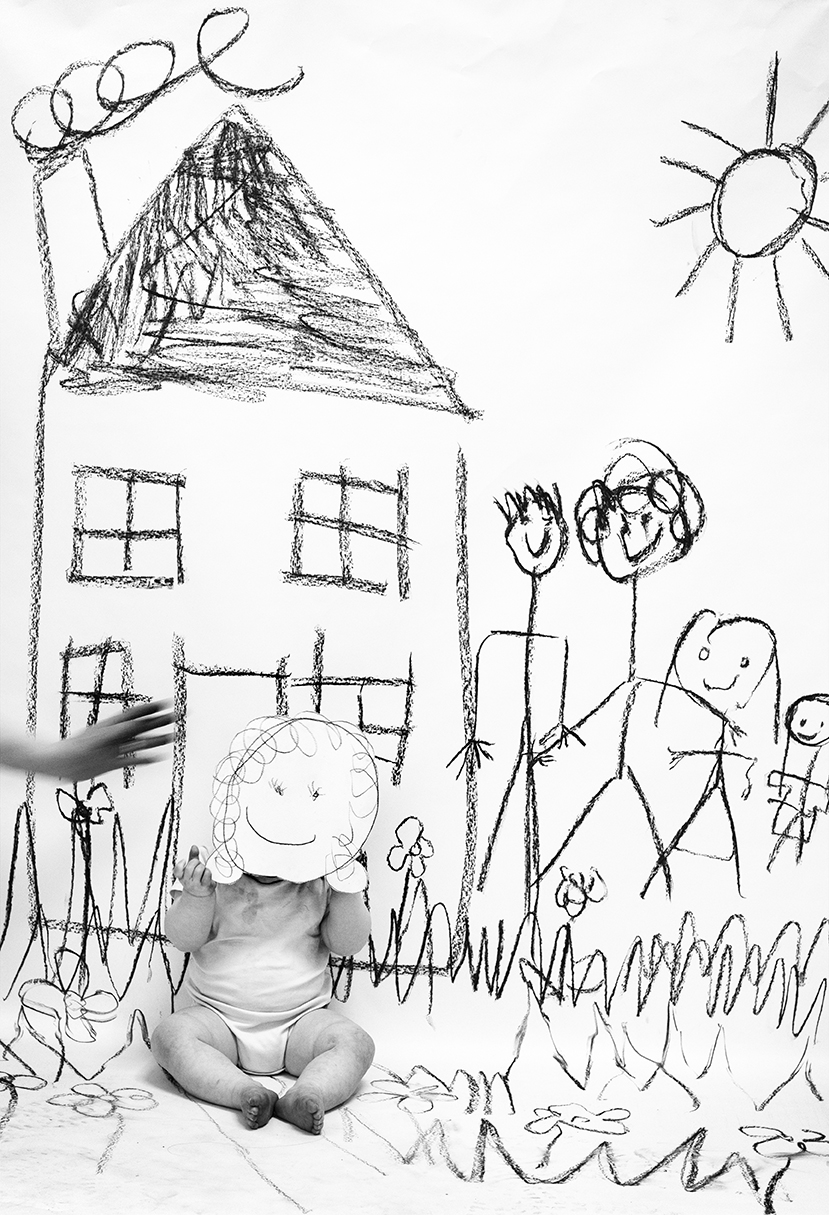


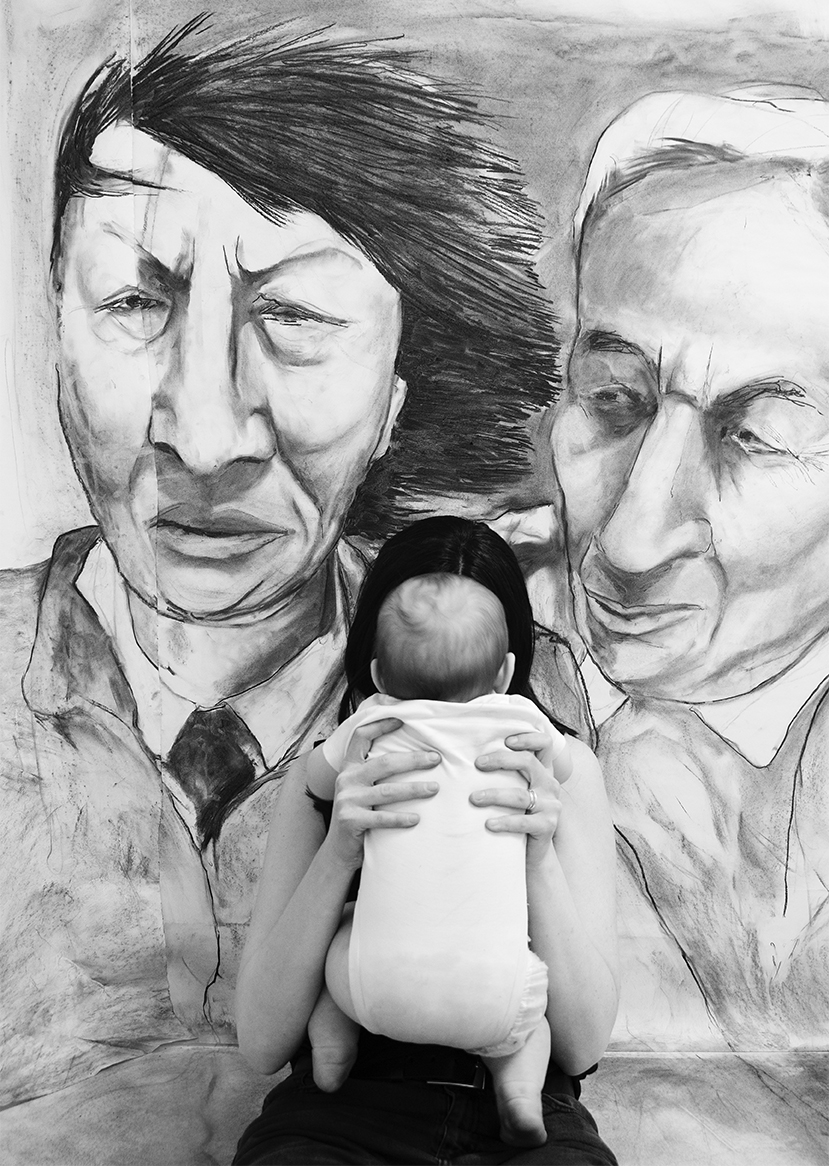
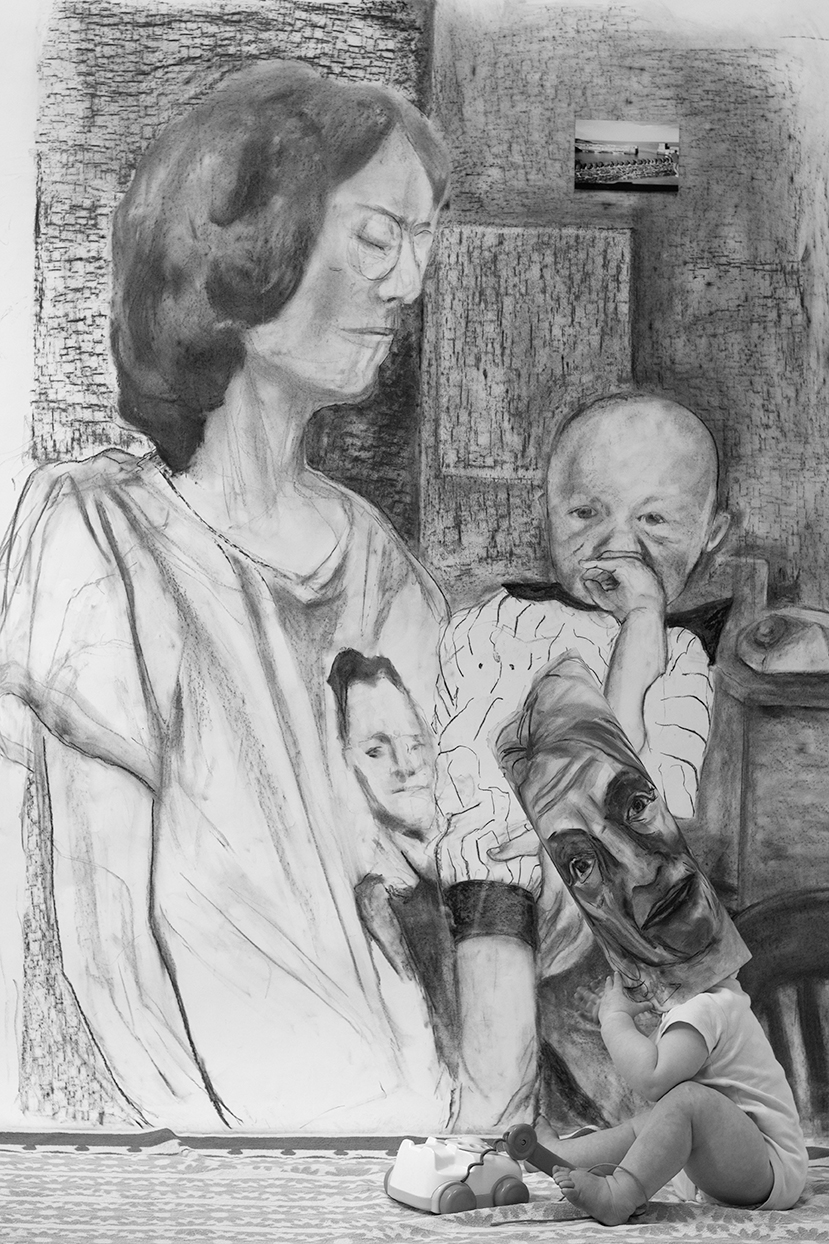
Works in progress at Artwalk Porty
14-15 September 2024
14-15 September 2024
Leith School of Art, Edinburgh
15 September - 14 December 2023
This exhibition of ceramics and accompanying works explores the materiality of domestic space – the walls, wallpaper, and personal paraphernalia that are the stuff of our immediate surroundings at home.
The works invite reflection on how we write ourselves into the spaces we live in and why we keep the things we keep: the hundreds of photos of nameless views; the albums collected from the chemist still in their original packaging; the children’s drawings that make it onto the kitchen wall and stay there.
The starting point for Slow Edit was a stack of 90s paper photo albums from the artist’s childhood and the textured wallpaper that covers her studio walls. With digital technology increasingly replacing the paper trails of lives lived, the works explore how our memories are embedded in the materials around us and within the material culture of our times.
Quick Photo series
2023
Glazed stoneware
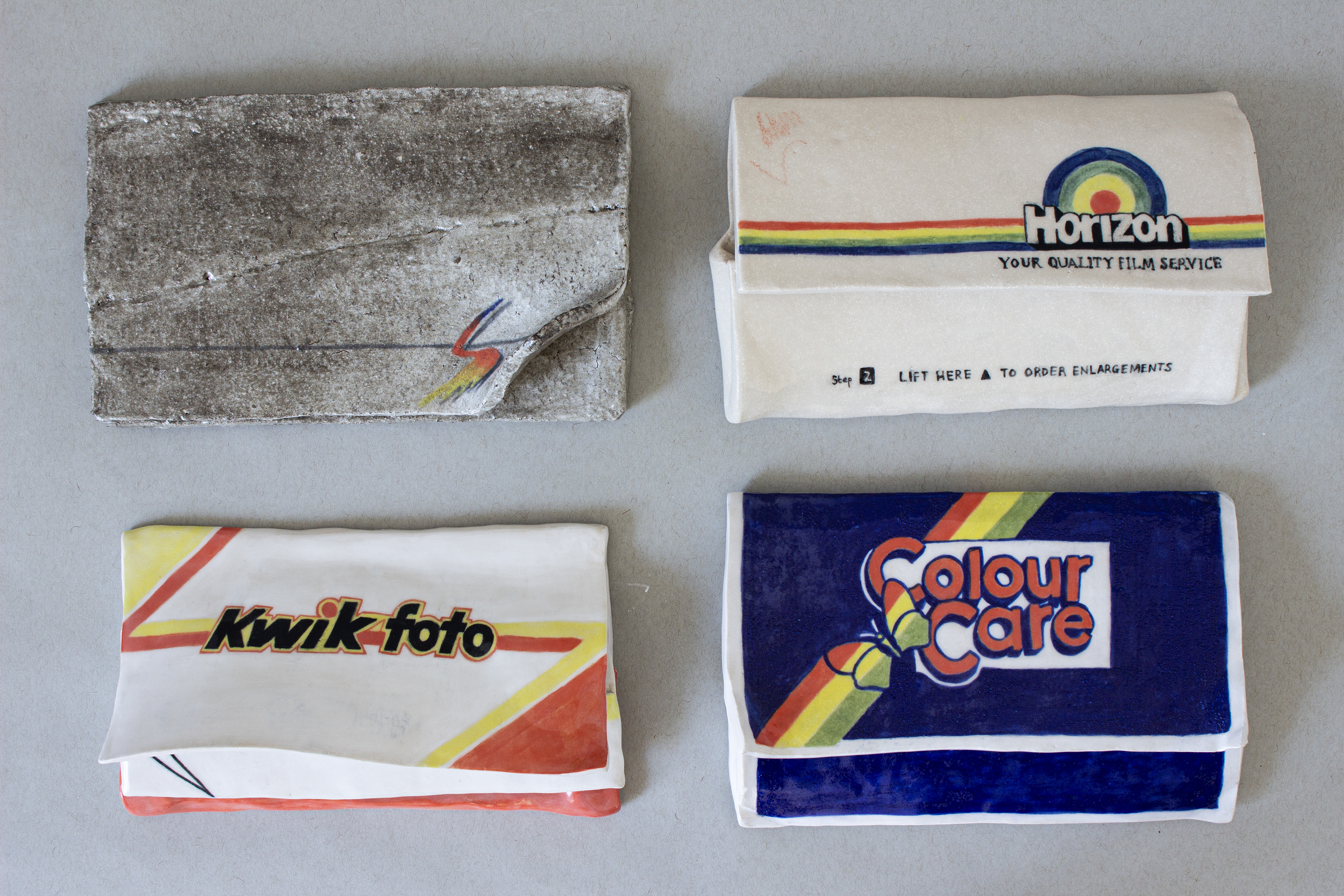
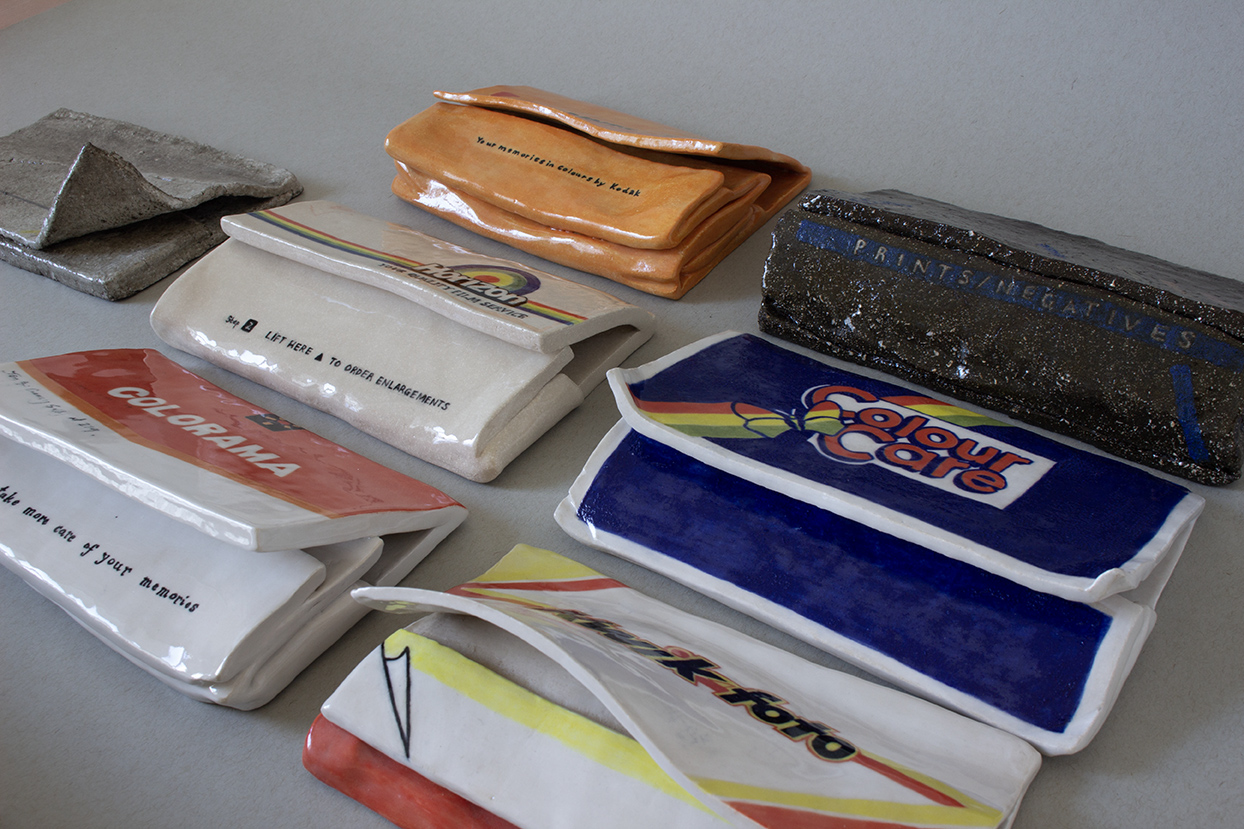
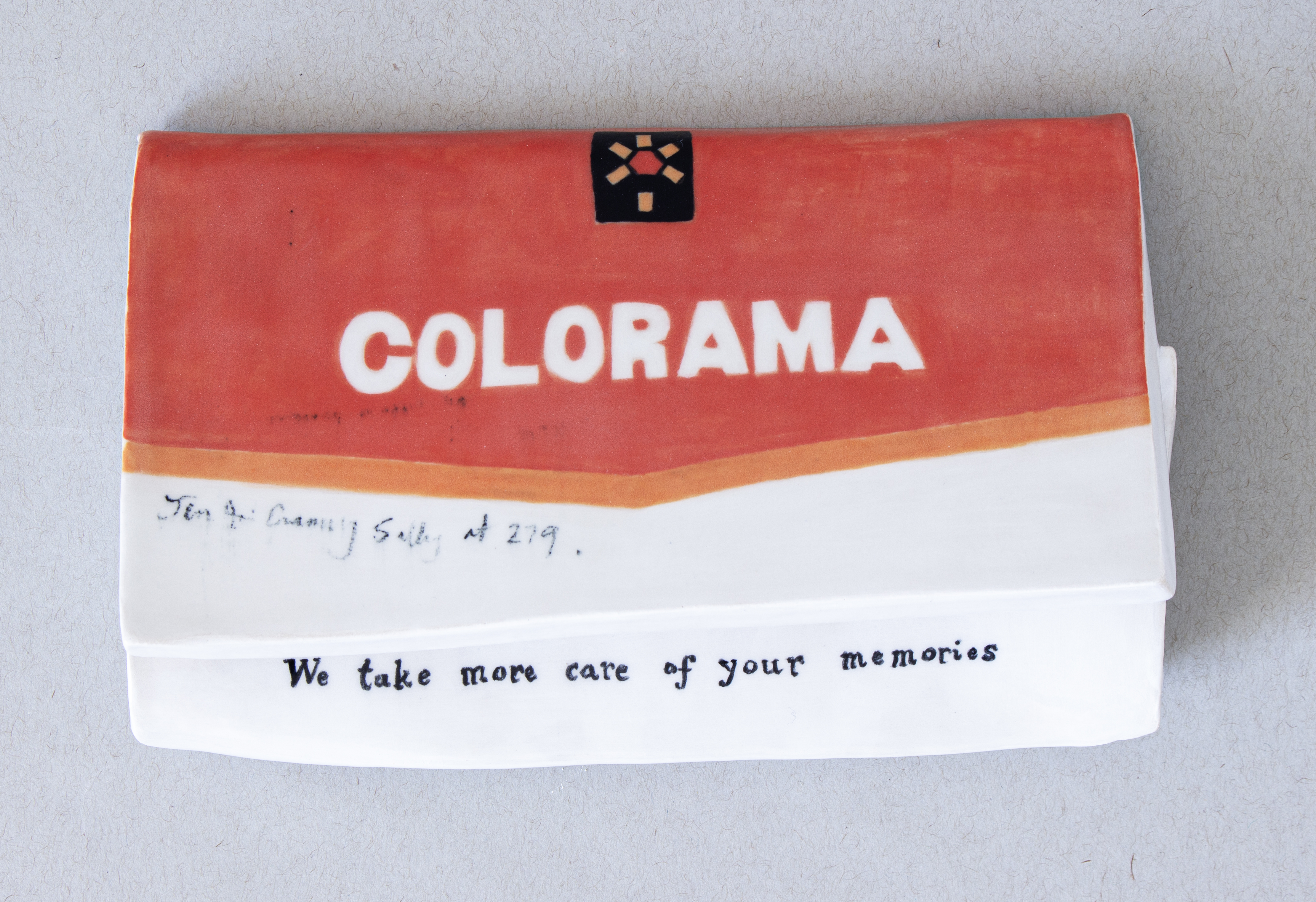

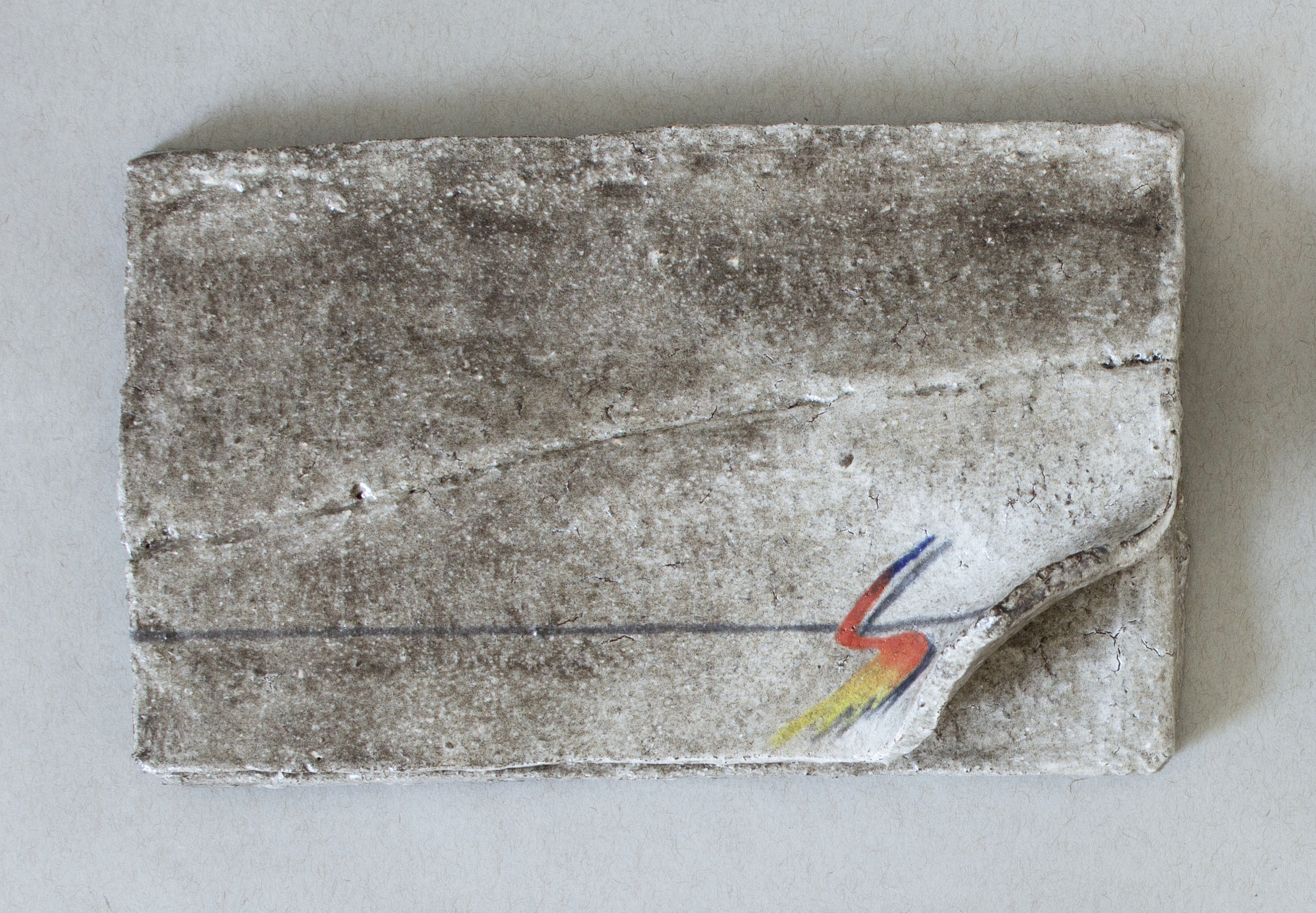


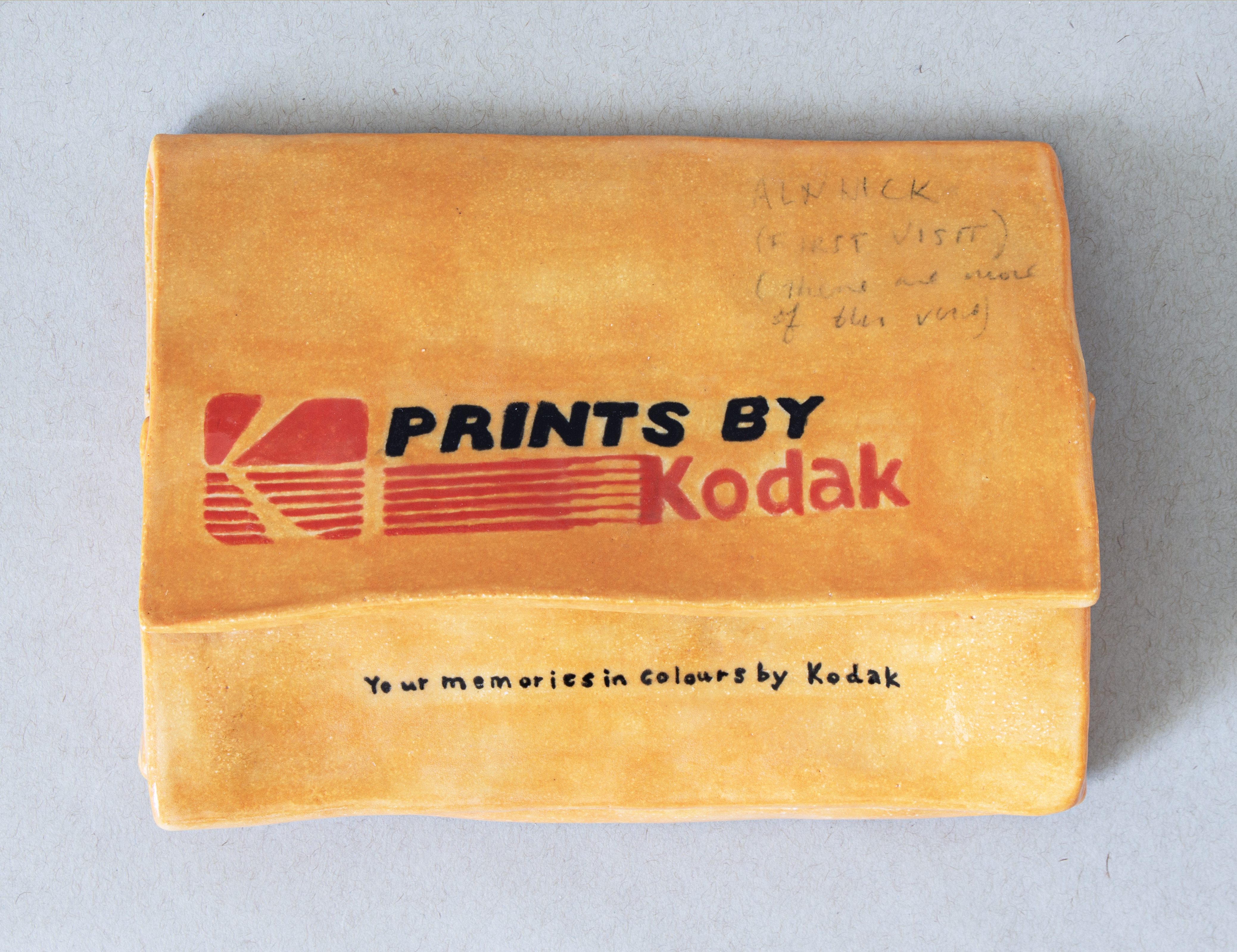

Left:
Fingers
2023
Stoneware with glaze
9x 28cm
Fingers
2023
Stoneware with glaze
9x 28cm
Right:
Siblings
2023
Stoneware with glaze
28 x 28cm
Siblings
2023
Stoneware with glaze
28 x 28cm

House piece (i-iii)
2023
Glazed stoneware with acrylic and varnish
Each 24 x 24cm




Crack
2023
Stoneware with glaze, acrylic and varnish
28 x 38cm
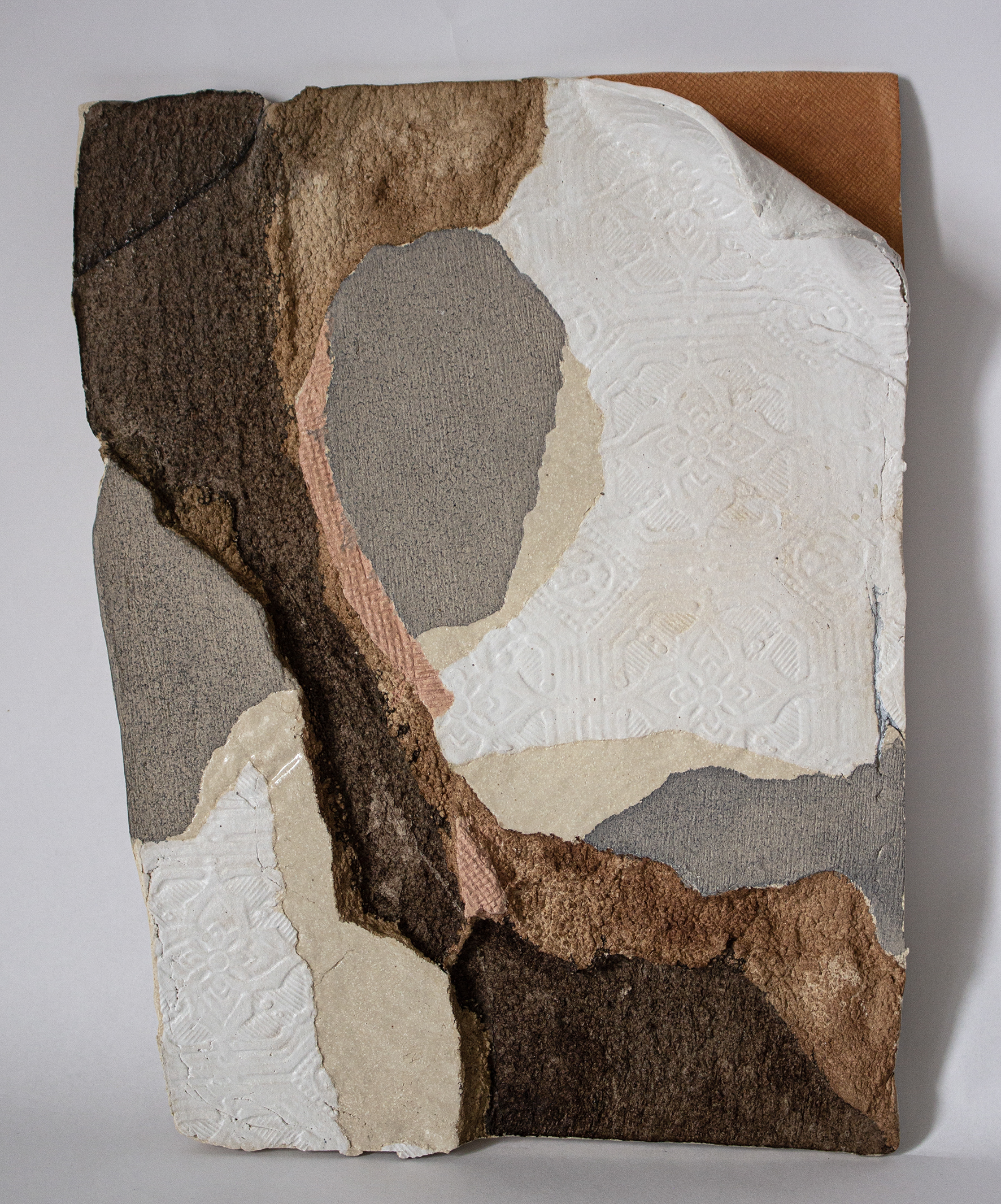
Wrinkle
2022
Glazed stoneware
18 x 24cm

Kitchen Wall
2023
Stoneware with glaze, acrylic and varnish
20 x 30cm

Worn (i)
2023
Stoneware
30 x 30 x 12cm

Worn (ii)
2023
Stoneware
30 x 30 x 12cm
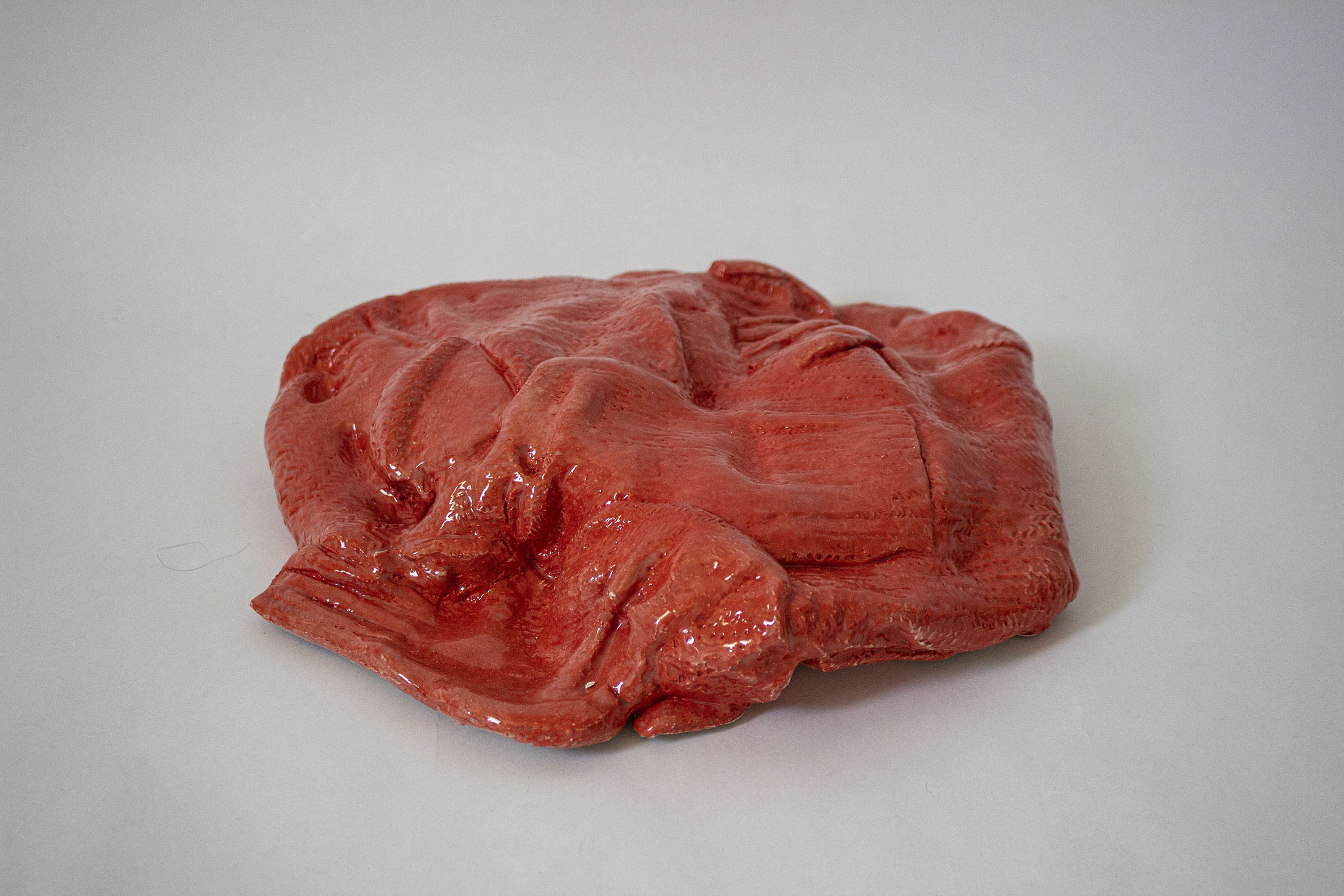
Left:
Flaking
2023
Stoneware with glaze
30 x 37cm
![]()
Flaking
2023
Stoneware with glaze
30 x 37cm

Right:
Pattern
2023
Plaster
40 x 55cm
![]()
Pattern
2023
Plaster
40 x 55cm
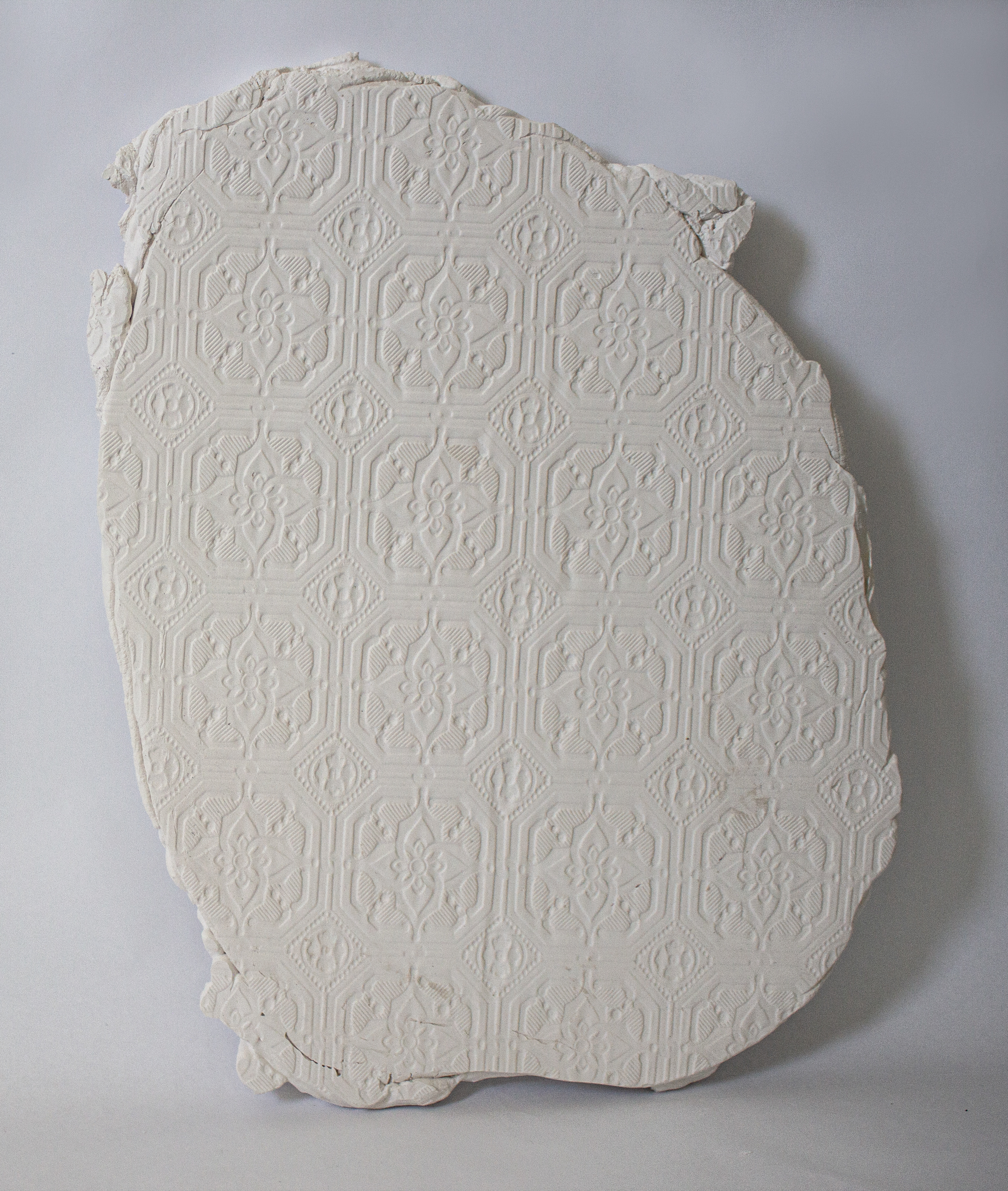
2023
Assorted fabrics
90 x 210cm

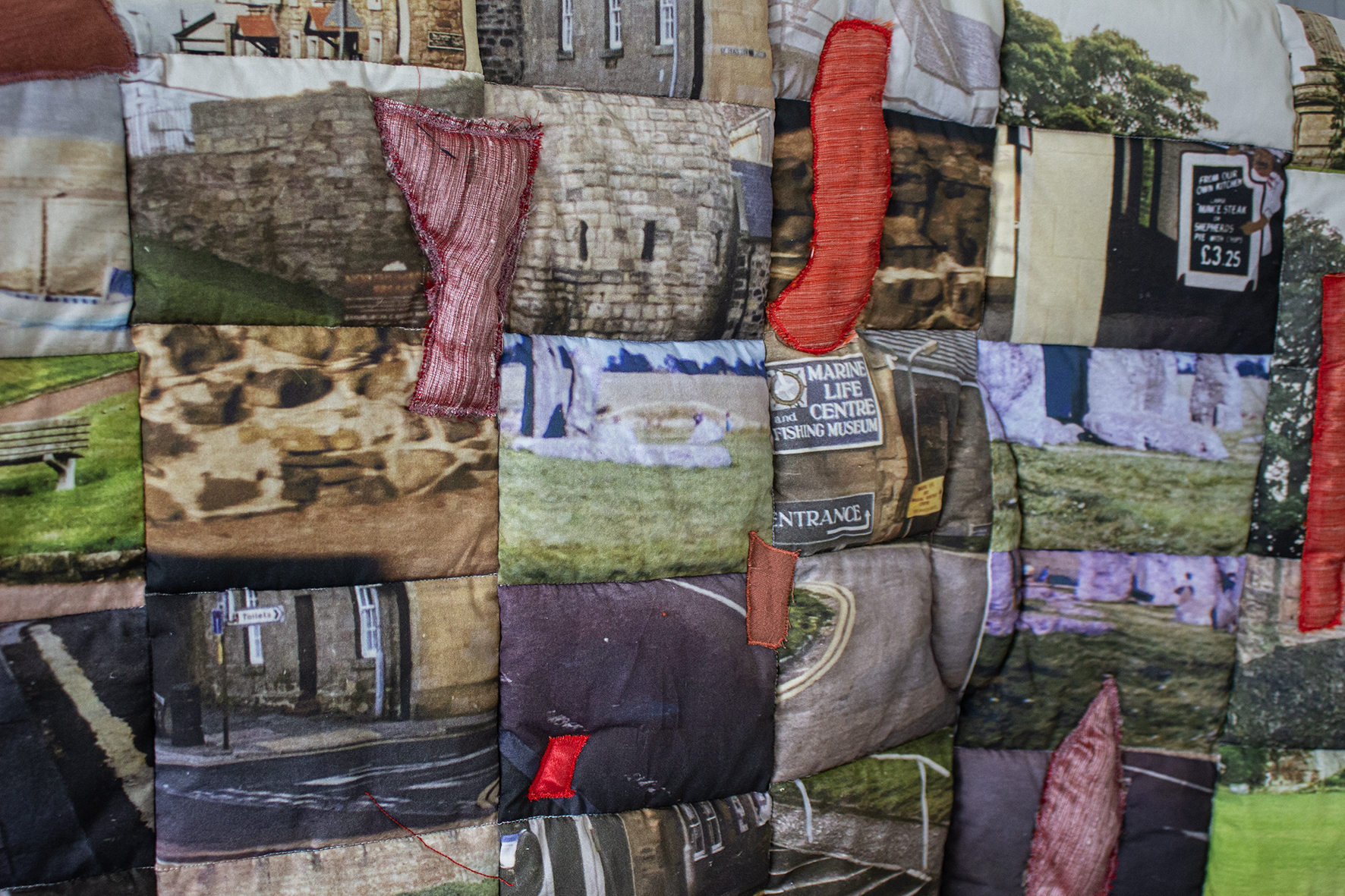
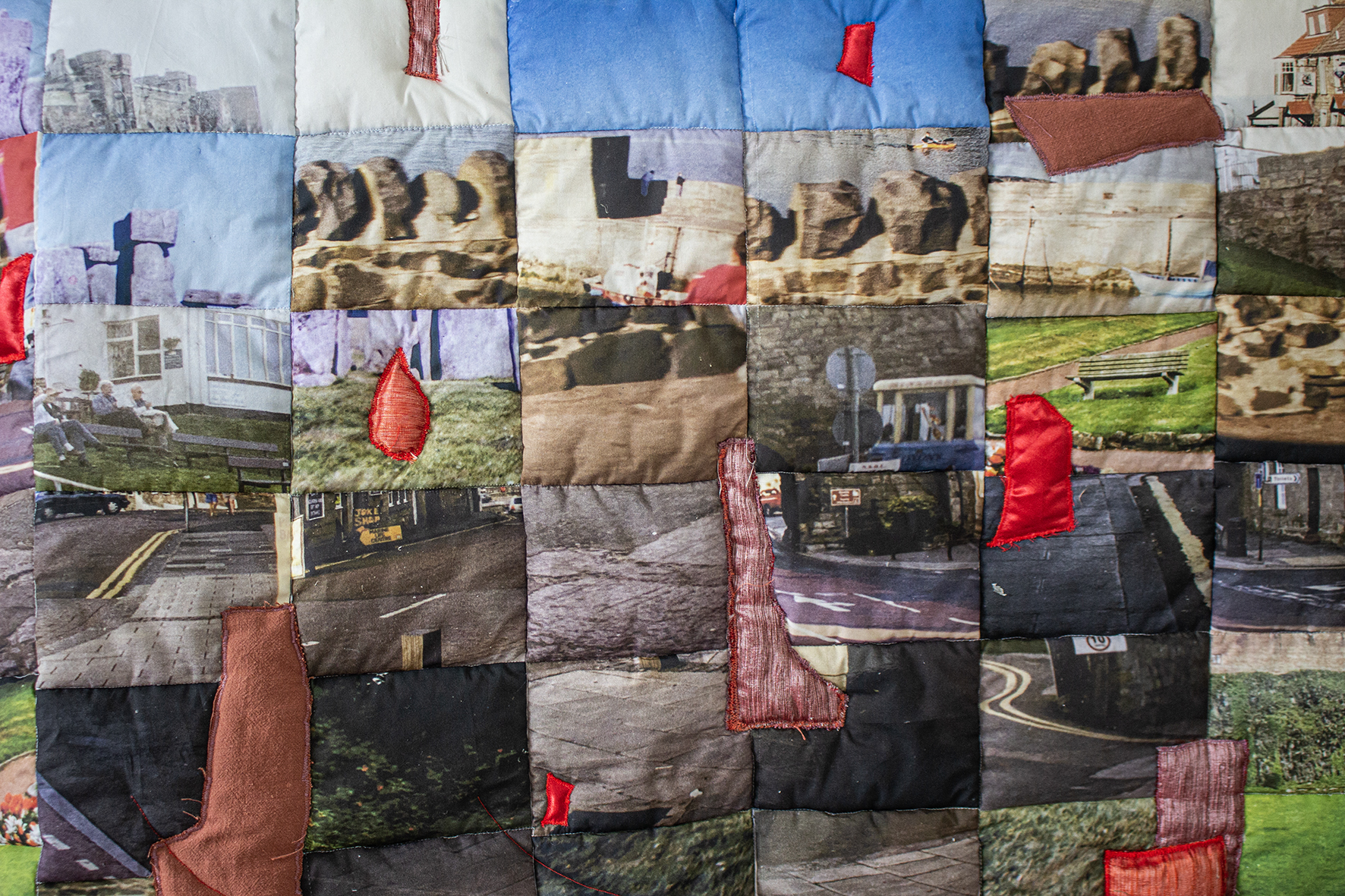
Verdant Works, Dundee
5 August - 26 November 2023
Fabrications is about acts of making and making things up. Often taking a childhood photo as a starting point, Becky Brewis handmakes large, mixed-media jute embroideries which explore the outer edges of memory – where fact becomes fantasy, and the personal becomes mythic.
Jute is tough and hard-wearing but also yielding and easily frayed at the edges, making it an expressive medium for exploring memory, physicality and the passage of time.
These five works are presented in the context of the social history galleries at Verdant Works, where human stories are told through the lens of the jute-making process.

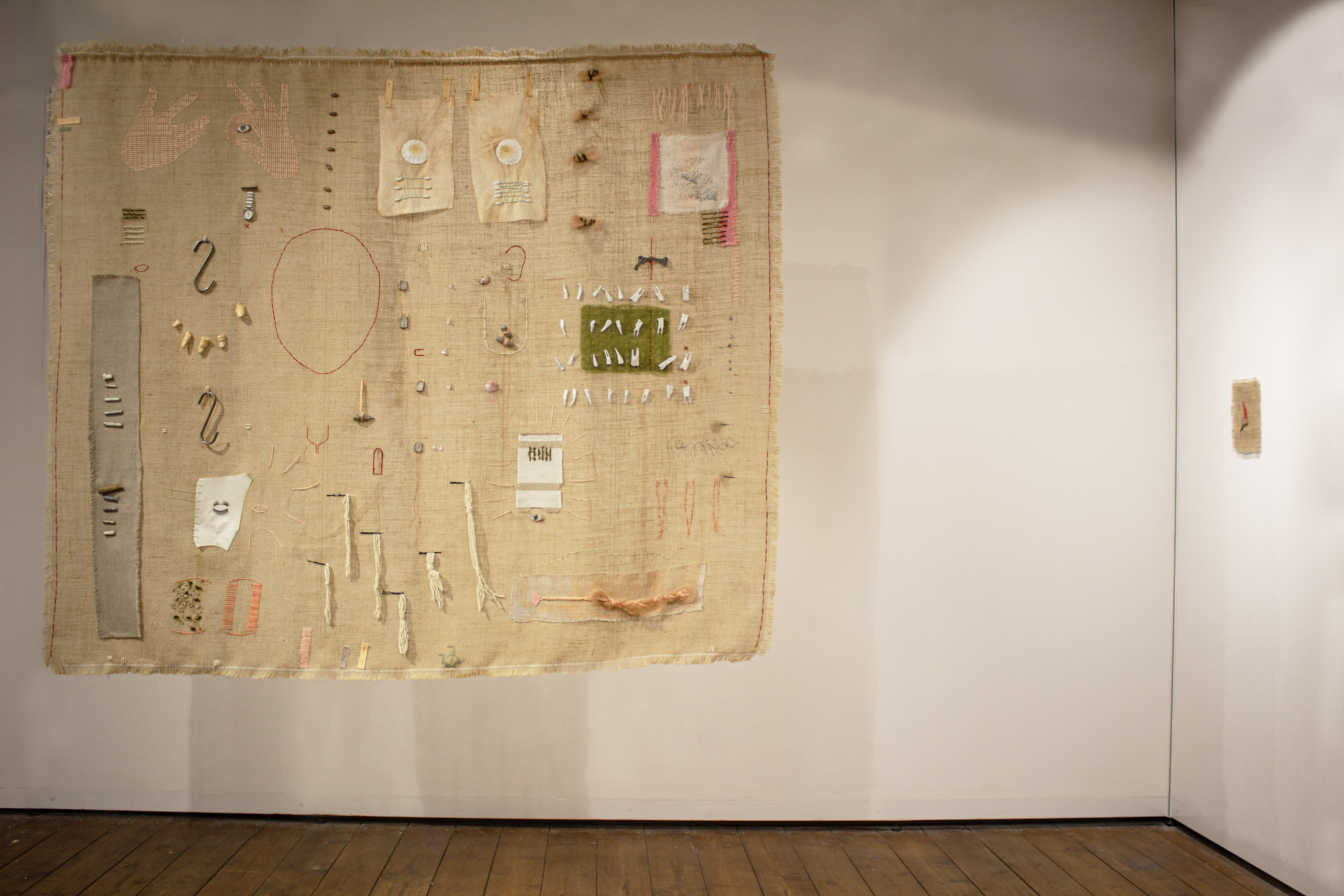
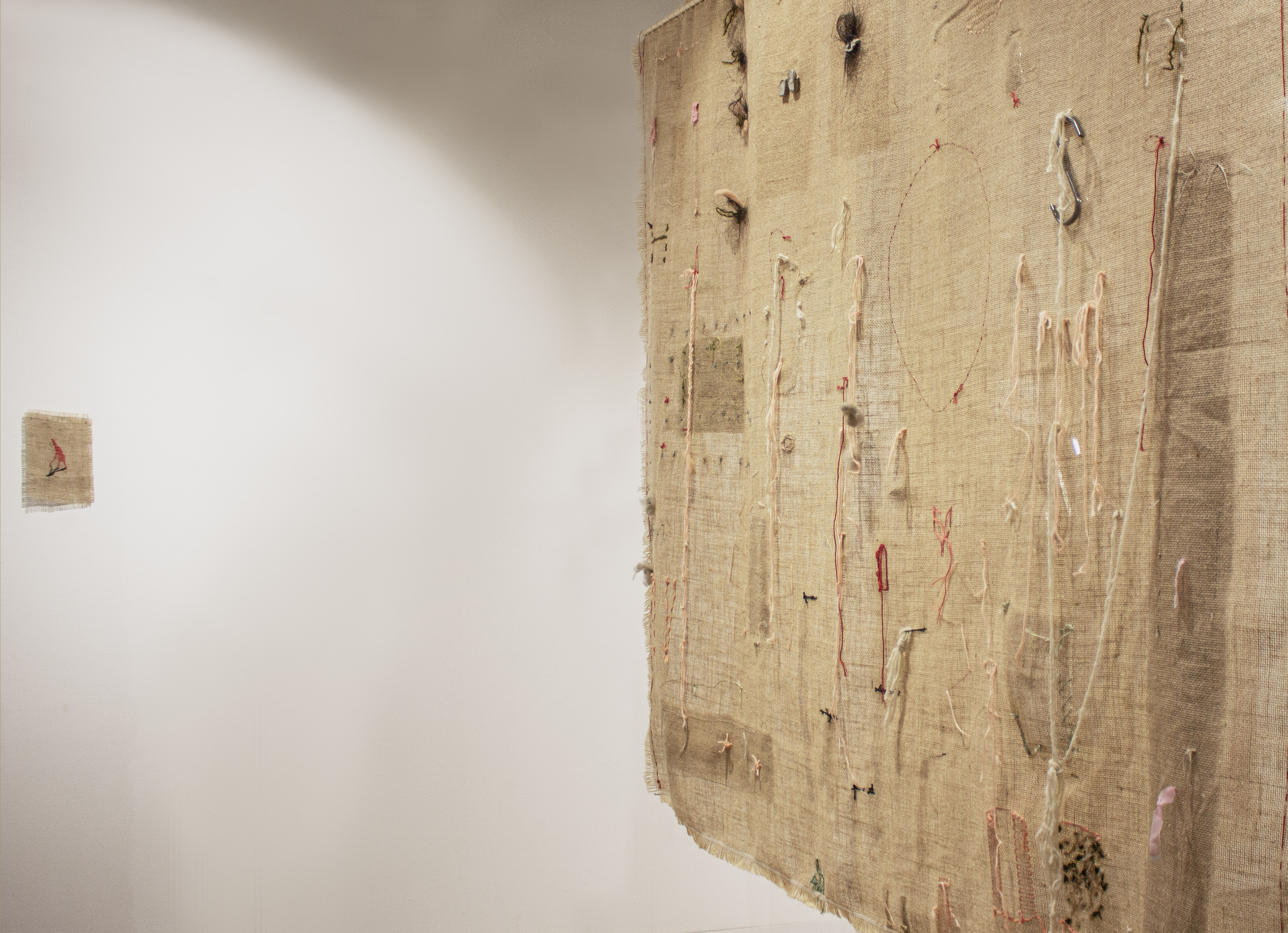

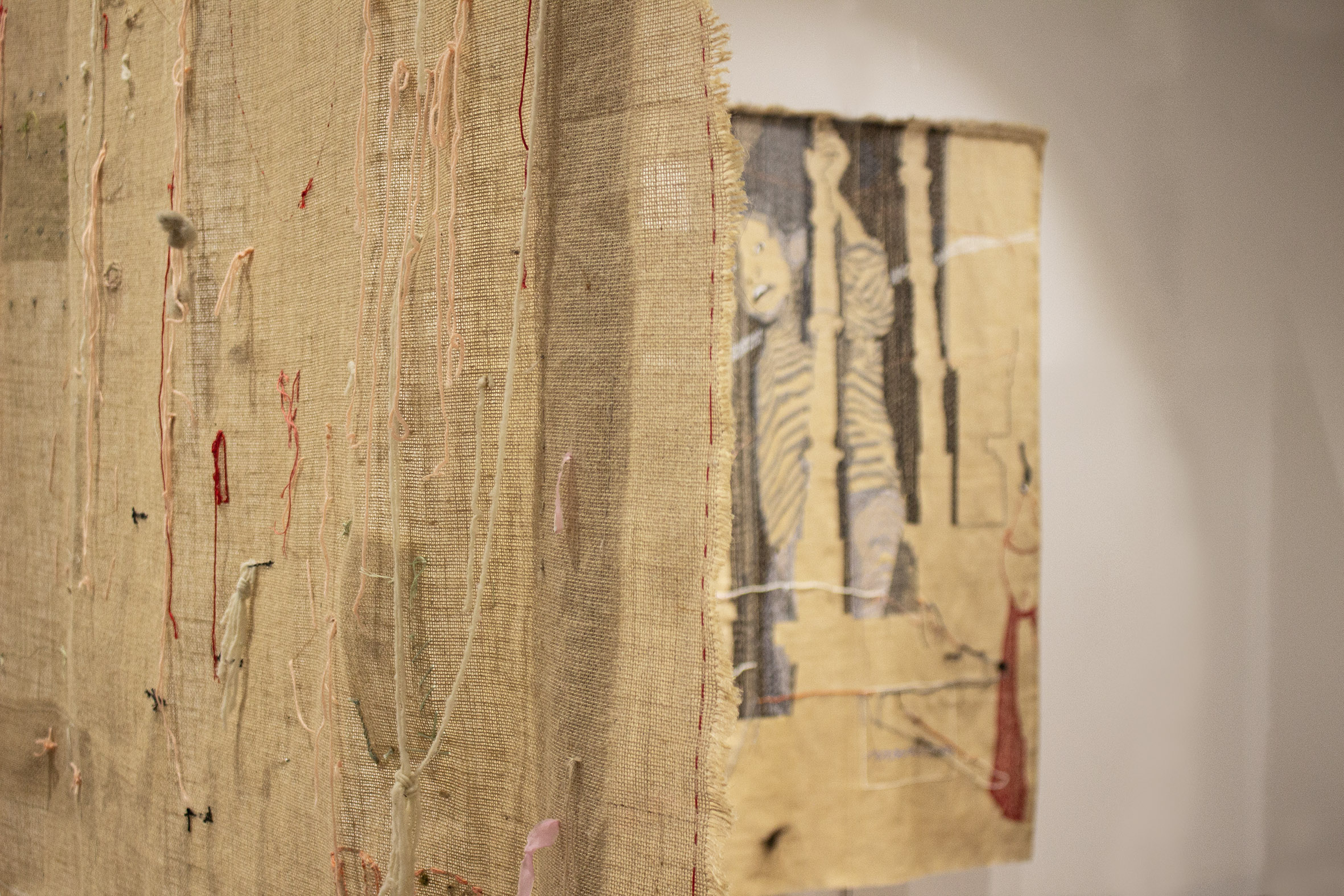
Surgery Waiting Room in about 1995
2020
Mixed media
150cm x 180cm
2020
Mixed media
150cm x 180cm
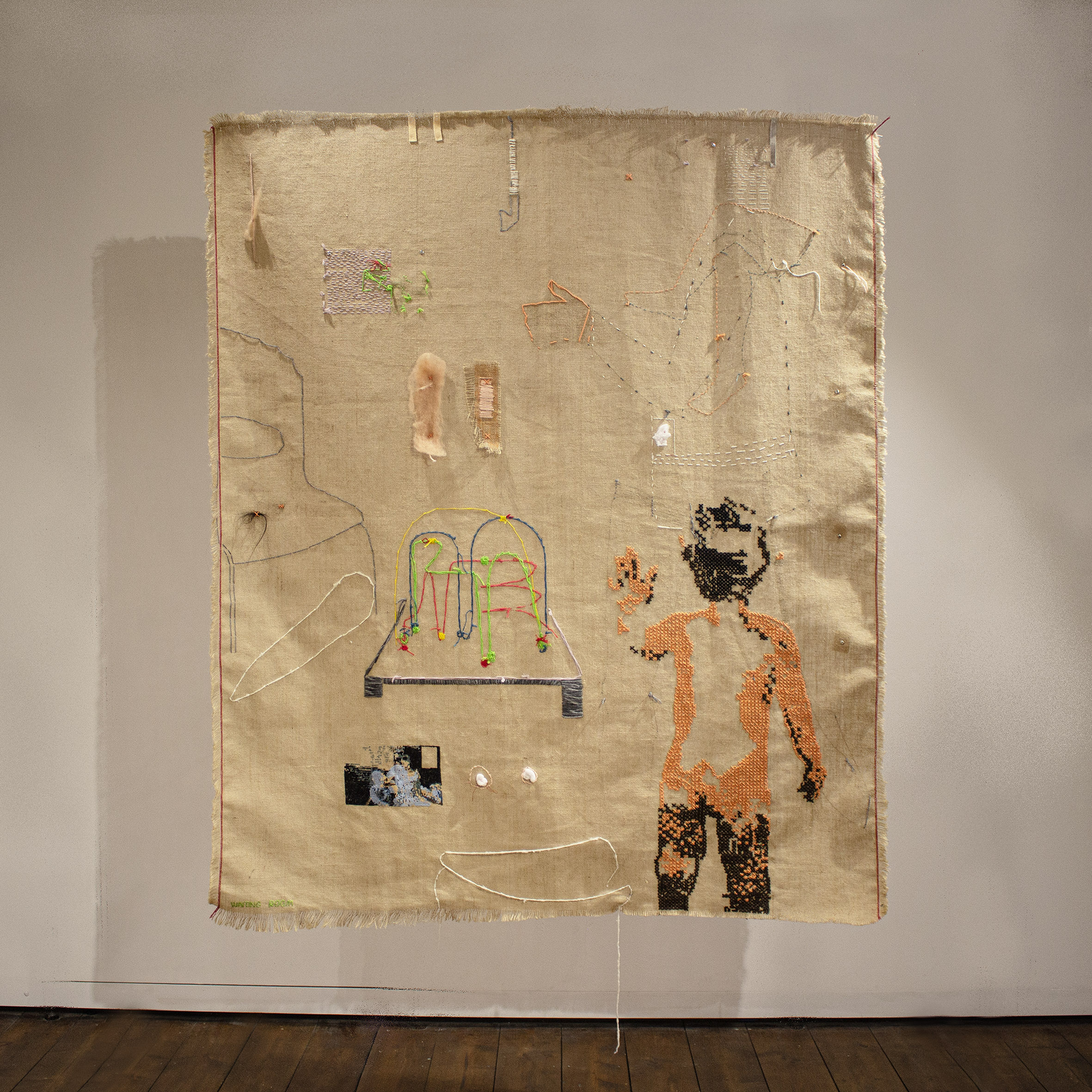

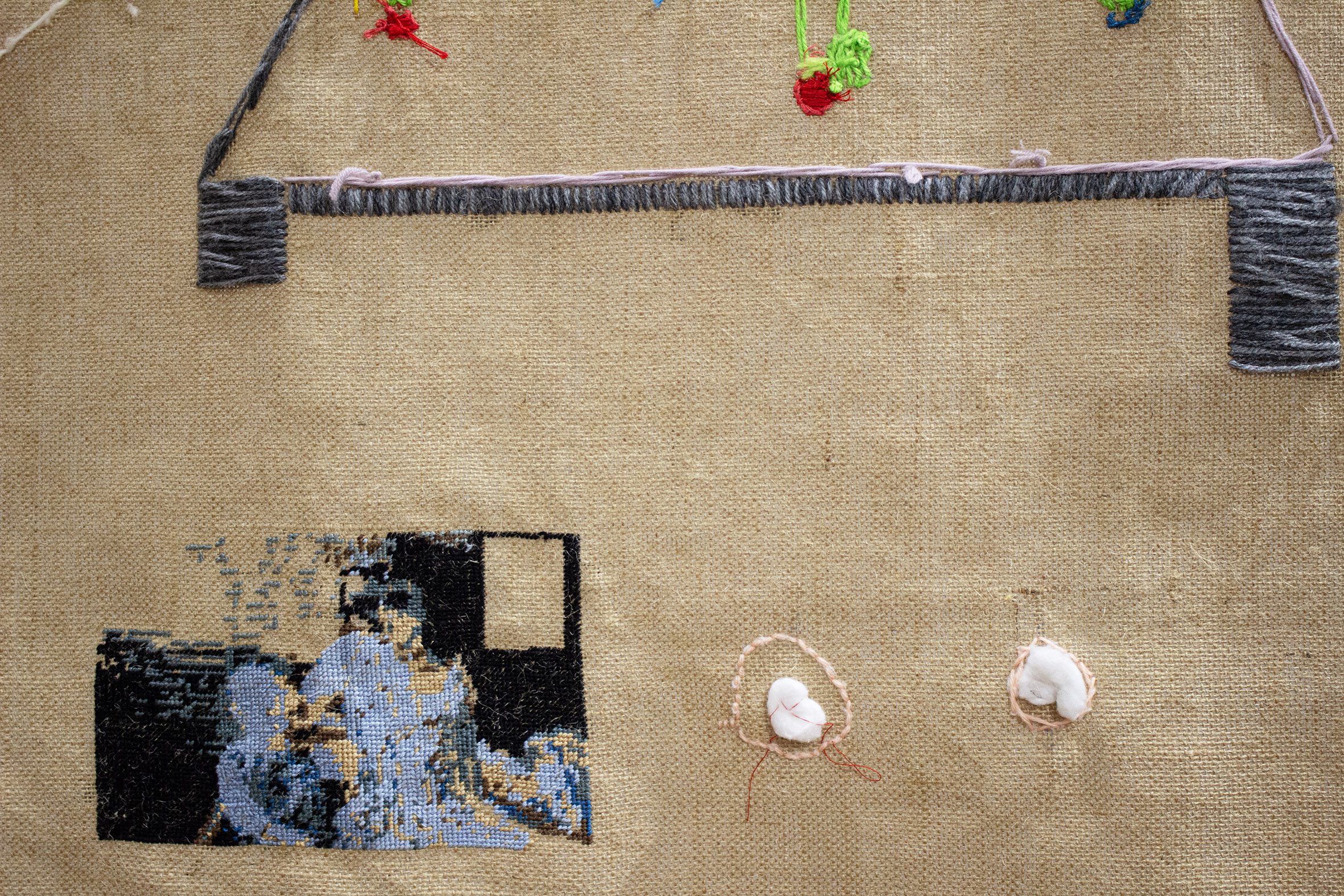
2023
Jute and embroidery silks
12cm x 18cm
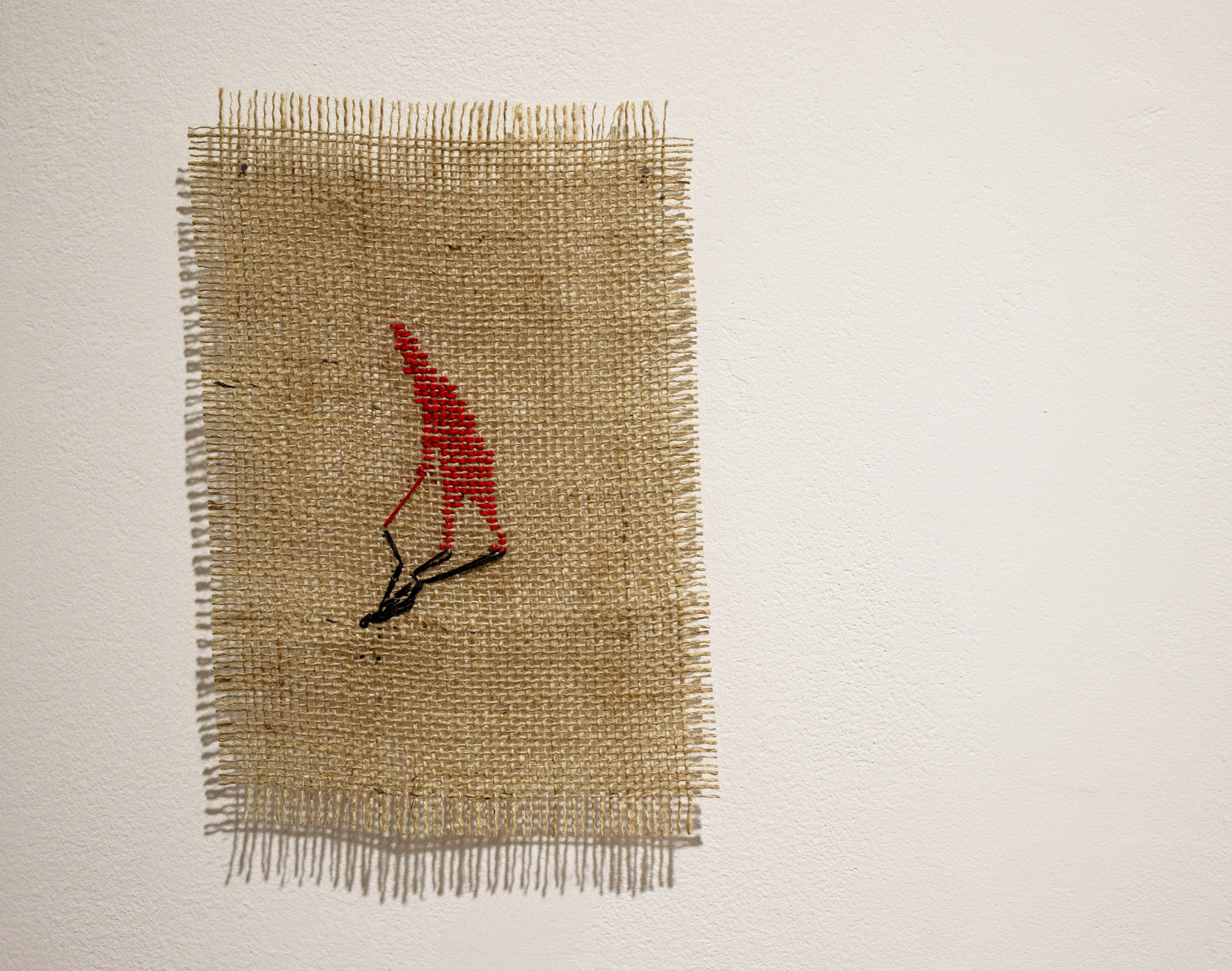
Good hair, good teeth, good skin
2019
Mixed media
150cm x 180cm
2019
Mixed media
150cm x 180cm
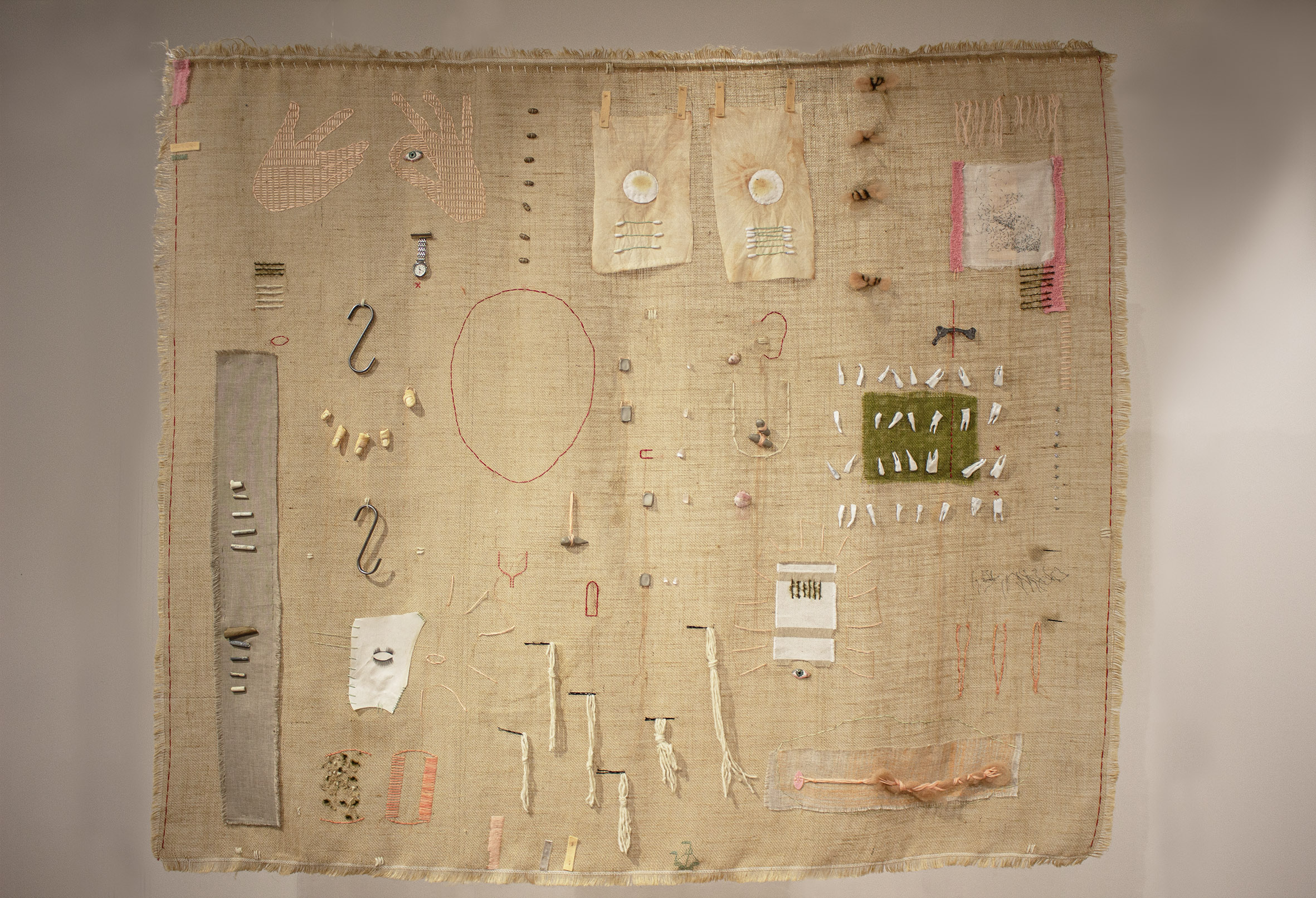

Legs
2019
Mixed media embroidery
75cm x 150cm
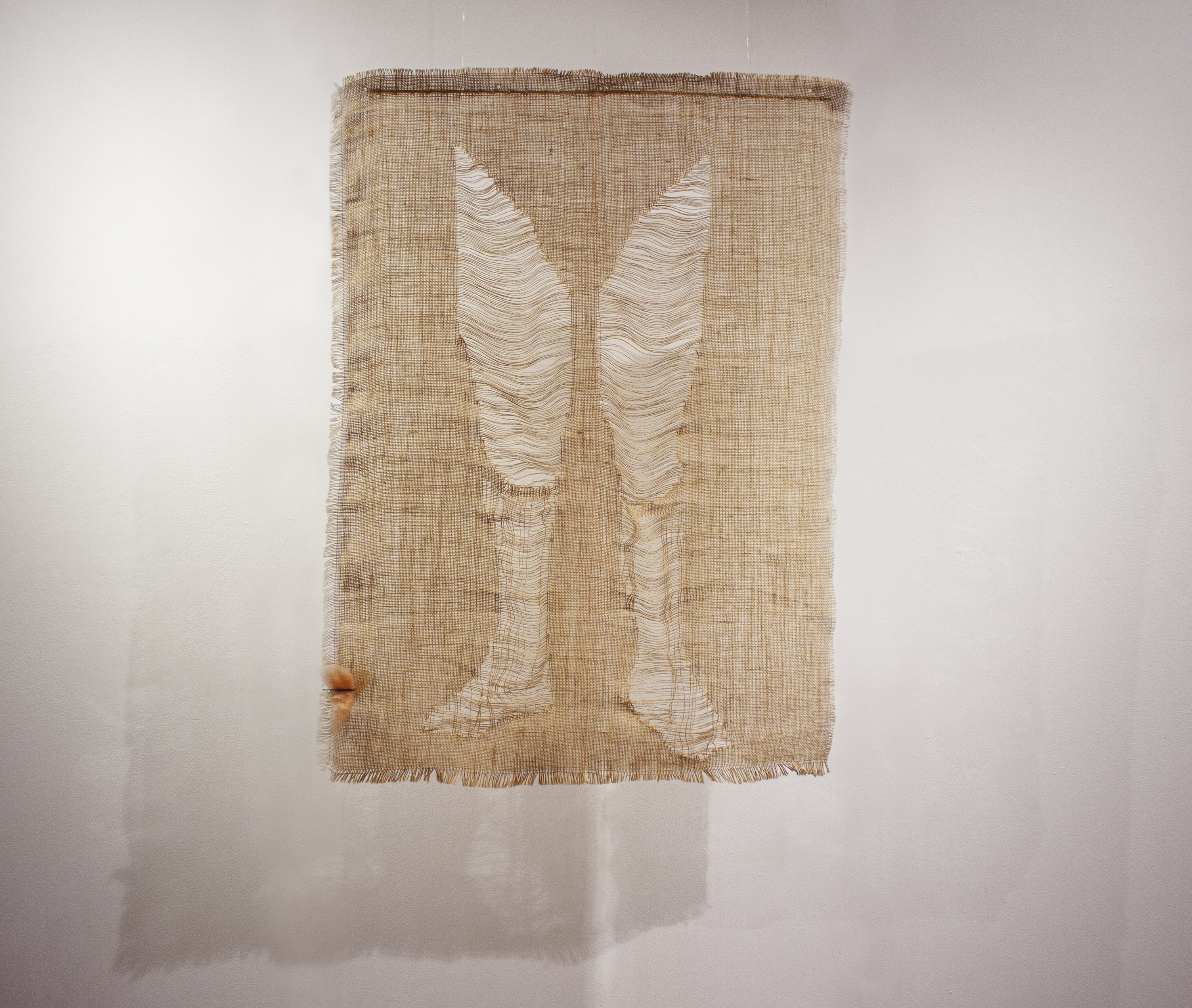

Little Red Riding Hood
2022
Jute and mixed media
150cm(w) x 185cm(h)

